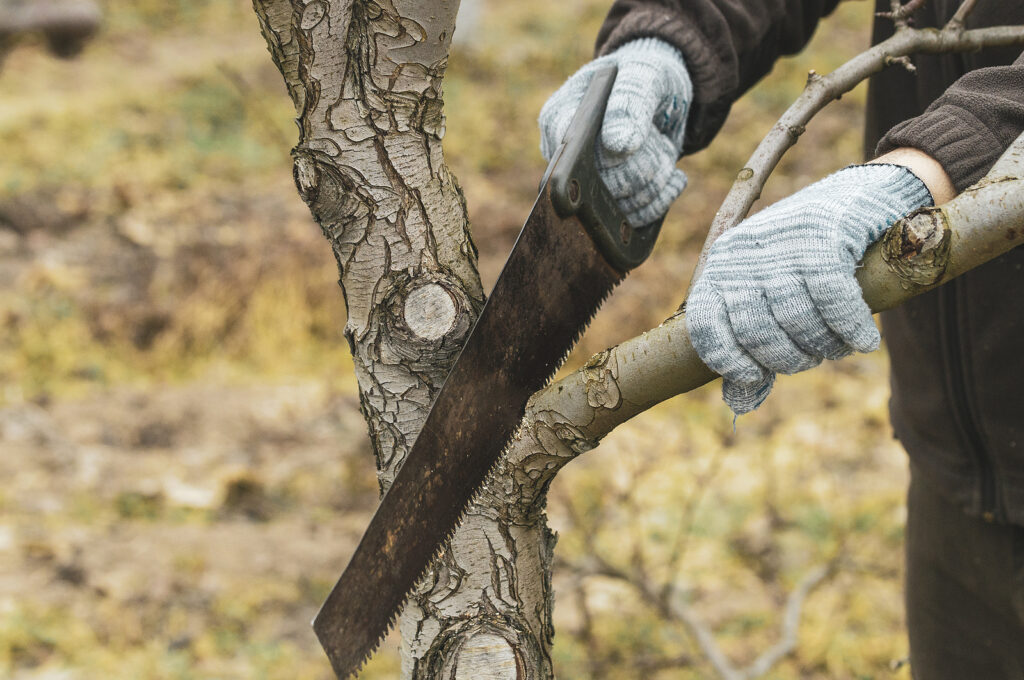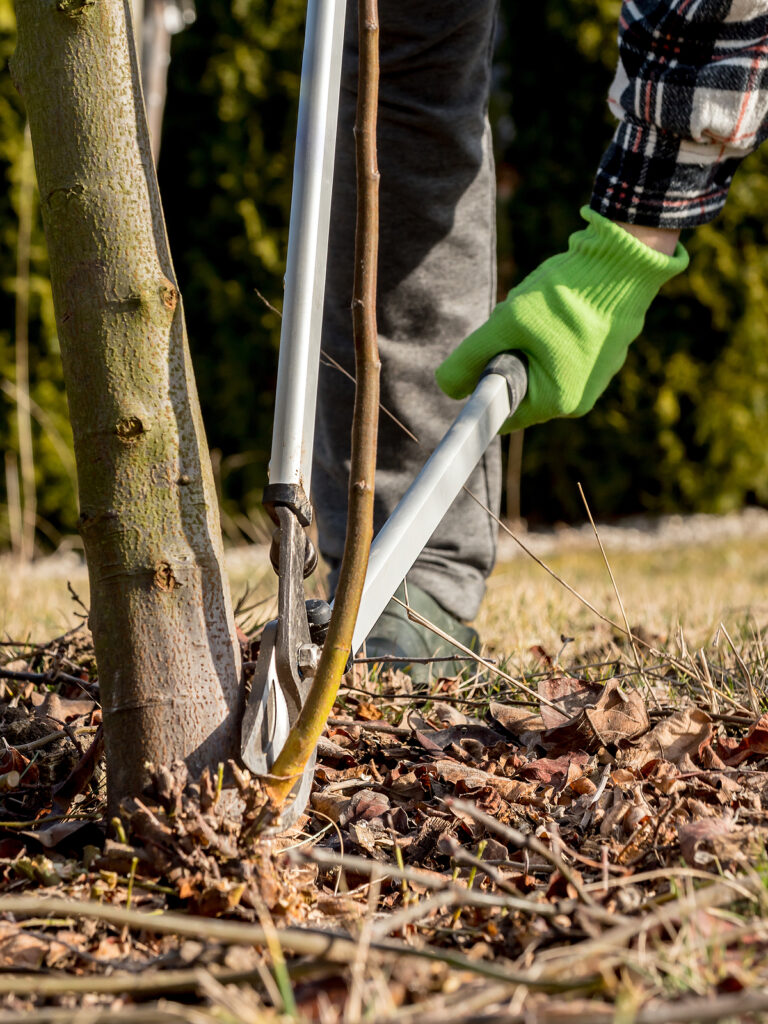Pruning involves trimming out unwanted or unhealthy plant growth to benefit the remaining portions of the plant.
Pruning is always secondary to the constant good management of plants.

Why prune
Pruning can do the following:
- Remove dead and diseased wood.
- Eliminate crowded and congested growth. Remove branches that cross or rub against other branches. Remove the weaker of the two.
- Increase the structural strength of a tree or shrub. For the first five years, prune to develop the framework of the tree or shrub.
- Preserve the natural shape of a plant; avoid cutting back so severely as to interfere with the natural shape. The exception is formal hedges or topiary. Pruning will not change the natural habit of a plant; pruned plants resume their normal habit when left to themselves.
- Slightly modify the overall size of a tree or shrub. If you find yourself pruning to limit a plant’s size, you chose the wrong plant for the location. It would be better to replace the overlarge plant with one that fits the site naturally.
- Improve air circulation especially in the center of the plant; this will commonly reduce disease problems.
- Encourage branching in a new direction or bushy growth.
- Increase flowering and vigor by removing old, non-blooming wood. Old wood is wood grown the previous season or before; new wood is wood grown during the current season.
- Help a newly planted plant become established by limiting quick tender growth.

When to prune
The time for pruning varies with the type of plant and the results you want to achieve. Some pruning can be done at any time, other pruning is best done during a specific season. Pruning requires an understanding of the growth habit of the plant being pruned.
- The best time to prune most deciduous trees and shrubs is during the dormant period, just before growth begins. This is a general rule and some plants may prove the exception.
- In cold-winter regions, late winter to early spring is the best time to prune deciduous plants.
- In mild winter regions, midwinter is the best time to prune deciduous plants.
- Never prune evergreens in winter because the additional evaporation from the cut surfaces can weaken or kill the plant. Prune evergreens in spring just as growth is starting.
- Plants can be pruned in summer, but the reduction of foliage may diminish the vigor of the plant that year.

Types of pruning cuts
- Pruning large branches: If you remove a large branch, make three cuts to avoid tearing the bark. The first cut is an undercut about a foot from the trunk; saw about a third of the way through the branch. The second cut is about an inch further from the trunk; this cut is from the top of the branch down and it removes the bulk of the branch. The third cut removes the stub of the branch back to the collar, which is as close to the trunk as possible.
- Pruning small branches: Prune small branches about ¼ inch above an outward-facing bud to direct new growth away from the interior.
- Pinching: Pinching is a simple pruning method. Pinching is the removal of soft growth. Pinching commonly removes small twigs and branches that interfere with the form or size of the plant. Pinching is usually done with the thumb and forefinger or a small pruner.
General pruning tips
- Take your time. Work slowly. Walk around the plant as you prune. Step back and observe frequently. Pruning is an art.
- As a rule, don’t remove more than 20 to 30 percent of foliage each year. Don’t over prune or remove too much.
- Avoid being over-ambitious. If a tree or shrub is too tall or too large, get professional help.
- Tree and shrub pruning wounds will heal on their own without special sprays or salves.

Basic pruning tools
- Hand pruners. These pruners are operated with one hand. By-pass or scissor pruners cut cleaner than anvil shears. Anvil shears have a tendency to crush rather than cut neatly.
- Long-handled lopping shears. These are operated with both hands. Longer handles give you greater leverage to cut larger branches.
- Pole saw with a wide blade and coarse teeth; the blade can be straight or curved; these come in a variety of sizes. These are for cutting high branches.
- Folding saw. Small hand saw with a blade that folds into the handle. This is for cutting smaller round branches within reach. The teeth are usually larger for faster cutting. Choose a saw that cut on both the push and pull strokes.
- Hedge shears for pruning hedges. These are meant for trimming the tips of branches, so avoid cutting branches larger than ¼ in h or so. Use hand pruners for larger branches.
- Rubbing alcohol used to spritz pruning tools to sterilize them between cuts. Tools that are not sterilized can transfer diseases from one branch to another spreading infection through a plant or landscape.
- Gloves and safety gear such as a hard hat, sturdy shoes, and earplugs when using power tools.















